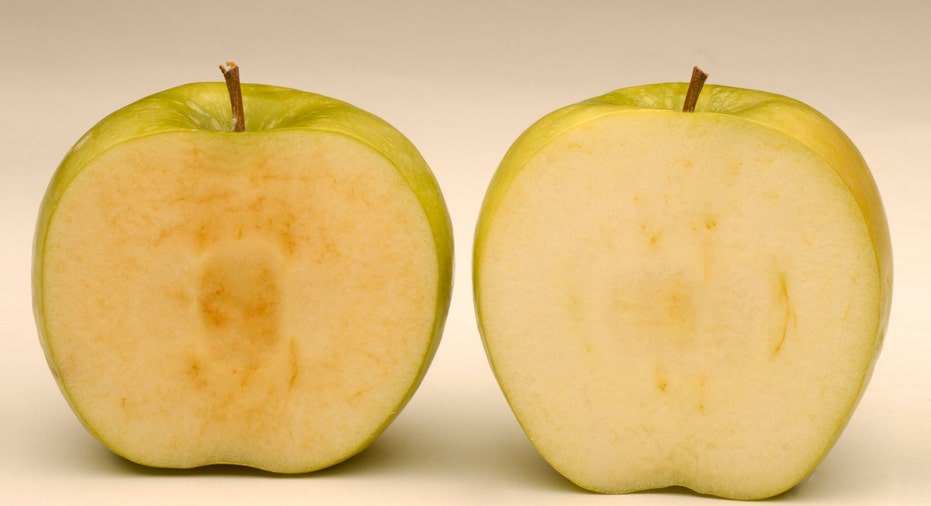The Truth About GMOs: The Good, The Bad, and The Really Ugly

Genetically modified Organisms (GMOs) have been a hot topic among industries leaders and especially consumers as their desire to eat healthier has grown in recent years.
“Most Americans are eating GMOs in every meal, but until recently most have been unaware of this fact,” says Non-GMO Project Executive Director Megan Westgate.
According to the Grocery Manufacturer Association, 75% of conventional processed foods contain GMOs.
Westgate says the biotechnology industry (the creators of GMOs) is to blame for hiding this information from the public in the past.
“It has really backfired. People are outraged when they find out they are eating experimental products without their consent,” she adds.
Kate Hall, Managing Director for the Council for Biotechnology Information, and GMO Answers spokesperson says they support the consumers’ right to know but are concerned that mandatory labeling of GMOs would actually be viewed as a warning label by many consumers.
“It’s important to remember that genetic engineering, or making a GMO, is a process by which a plant is developed, not an ingredient itself,” she said.
Monsanto (NYSE:MON), one the largest pharmaceutical and agricultural companies that produce GMOs, say GMOs are identical to their Non-GMO counterparts in terms of nutrition, taste, and flavor.
“In thousands of independent studies since the 1980’s, not one health issue has ever been identified,” says Christi Dixon, Monsanto’s spokesperson.
“Many of us here at Monsanto are parents—we’ve spent a lot of time thinking about and studying GMOs, and we feel confident feeding them to our kids,” she adds.
Today, the majority of GMO crops are corn (88% of the U.S. crop), soy (94%), canola (90%), cottonseed (90%), and sugar beets (95%) according to the Non-GMO Project.
“We have not fed a group of humans GMO foods for their whole lives, and another group non-GMO foods for their whole lives, with sufficient numbers to determine statistically whether the two groups are different in their health status or development of illness,” says Martha Grout, M.D., President-Elect of the American Academy of Environmental Medicine.
“Nevertheless, I would urge caution, since we already appear to have initiated the biggest unfunded human experiment in history – The title of this experiment is: “What happens to animals and human beings when they eat crops genetically modified to contain herbicides/insecticides or to be resistant to herbicides/insecticides?” And the answer is very much unknown,” she adds.
Grout, who is also the Medical Director at Arizona Center for Advanced Medicine says it’s important that we educate people on what they are, and how they are produced. “Let the people make their own decisions. The tricky part comes in whom we educate, who does the education, and how the information is slanted or spun,” she says.
The website “GMO Answers” is funded by the members of The Council for Biotechnology Information, which includes BASF, Bayer CropScience, Dow Chemical’s (NYSE:DOW) Dow AgroSciences, DuPont (NYSE:DD), Monsanto and Syngenta (NYSE:SYT).
“These are organizations that would appear to have stake in promoting the use of GMO crops,” says Grout.
GMOanswers.com says scientific authorities from around the world, such as the U.S. National Academy of Sciences, United Nations Food and Agriculture Organization, World Health Organization, American Medical Association and the American Association for the Advancement of Science have analyzed thousands of scientific studies on GMOS.
“They concluded that GM (genetically modified) food crops do not pose any more risks to people, animals or the environment than any other foods, “ says Hall.
Genetic engineering allows plant breeders to take a desired trait, like resistance to a particular plant disease, from one plant or organism and transfer that trait to the plant they want to improve.
“We take our cues from farmers, who are incredible at what they do. They are faced with significant challenges such as unpredictable weather, soil erosion, pest, and plant disease,” says Dixon.
In 1960, each American farmer fed about 25 people. Today, the number is closer to 155. “We need to do more with the land we have available for farming, and in a sustainable way,” she adds.
Meanwhile, the global population is expected to increase by 38%, from 6.9 billion in 2010 to 9.6 billion in 2050. Biotechnology companies say GMO technology can help produce enough food safely and sustainably while preserving our natural resources.
Interestingly, Westgate says the U.S. the government has approved GMOs based on studies conducted by the same corporations that created them and profit from their sale.
“There is a well-documented revolving door between the biotechnology industry and government agencies. In the absence of mandatory labeling, the Non-GMO Project was created to give consumers the informed choice they deserve,” she says.
Westgate says their “Butterfly label” was created to give Americans a way to opt out of the GMO experiment if they choose.
In the end, both sides do agree that consumers need to do their research when it comes to GMOs and make their own decisions.



















